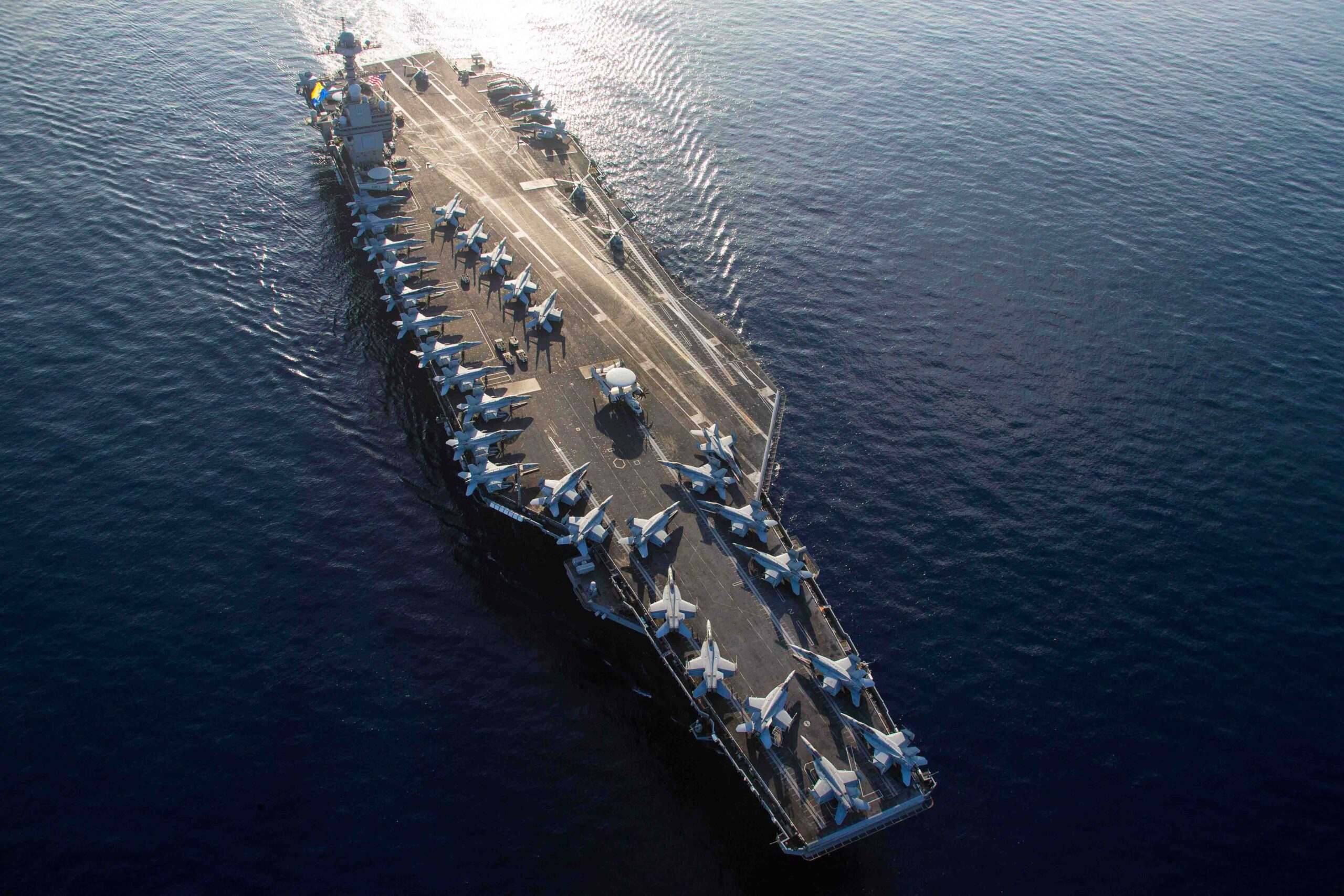President Trump Unveils ‘Trump-Class’ Battleships
President Donald Trump announced Monday the creation of a new battleship class for the U.S. Navy, marking an unexpected return to a vessel type that last saw construction nearly eight...

The world's largest aircraft carrier USS Gerald R. Ford (CVN 78), steams in the Ionian Sea, Oct. 4, 2023. U.S. Navy Photo
The Secretary of War has directed the Gerald R. Ford Carrier Strike Group to the U.S. Southern Command area of responsibility to support operations against transnational criminal organizations and counter narco-terrorism in defense of the homeland.
The strike group deployment includes the USS Gerald R. Ford (CVN 78), USS Mahan (DDG 72), USS Winston S. Churchill (DDG 81), and USS Bainbridge (DDG 96), bolstering U.S. capacity to detect, monitor, and disrupt illicit actors and activities in the region.
The deployment follows the Trump administration’s latest military strike against suspected drug smugglers, which killed six individuals aboard a vessel operated by Tren de Aragua in the Caribbean Sea. The nighttime operation marks the latest escalation in the administration’s campaign against drug trafficking organizations, which has resulted in 10 known strikes killing nearly four dozen people since early September.
The strikes have expanded beyond the Caribbean, with the administration conducting two lethal strikes in the Eastern Pacific on October 21 and 22, killing a total of five individuals.
“If you are a narco-terrorist smuggling drugs in our hemisphere, we will treat you like we treat Al-Qaeda,” Secretary of War Pete Hegseth said. “Day or NIGHT, we will map your networks, track your people, hunt you down, and kill you.”
President Trump said on Thursday that his administration does not plan to seek a declaration of war against drug cartels and indicated that land-based operations against cartels would be next.
The administration has formally determined that the United States is engaged in a “non-international armed conflict” with drug cartels.Hegseth has defended the approach by stating: “These cartels are the Al Qaeda of the Western Hemisphere, using violence, murder and terrorism to impose their will, threaten our national security and poison our people.”
The military campaign runs parallel to traditional Coast Guard interdiction efforts. On October 14, the Coast Guard announced it had seized more than 100,000 pounds of cocaine in the Eastern Pacific since launching Operation Pacific Viper in early August, resulting from 34 interdictions and the apprehension of 86 individuals.
Legal experts have questioned the administration’s use of military force rather than traditional maritime law enforcement, with critics questioning why non-lethal methods are not attempted before resorting to deadly force. President Trump has dismissed traditional Coast Guard interdiction methods as “totally ineffective.”
The U.S. military has been increasing its presence in the Caribbean, including deployments of guided-missile destroyers, F-35 fighter jets, a nuclear submarine and thousands of troops. In August, three U.S. Aegis guided-missile destroyers arrived off the coast of Venezuela as part of an effort to address threats from Latin American drug cartels.
Coast Guard interdiction operations in the Eastern Pacific are performed under the authority of the Coast Guard’s Southwest District, headquartered in Alameda, California. Detection and monitoring is coordinated through U.S. Southern Command’s Joint Interagency Task Force-South in Key West, Florida.

Sign up for gCaptain’s newsletter and never miss an update

Subscribe to gCaptain Daily and stay informed with the latest global maritime and offshore news
Essential news coupled with the finest maritime content sourced from across the globe.
Sign Up